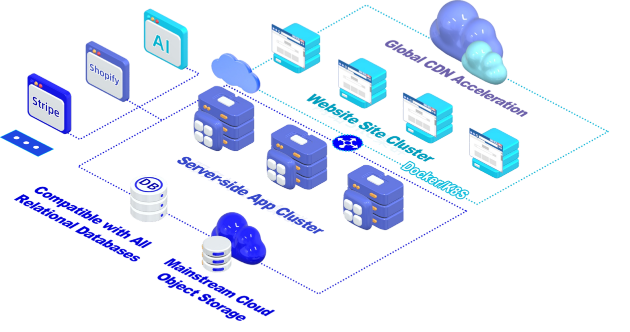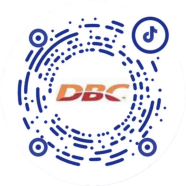 Mon-Fri, 9:00-17:00 (Beijing Time, UTC+8)
Mon-Fri, 9:00-17:00 (Beijing Time, UTC+8)Frontier Insights
We are dedicated to advancing the technology industry and sharing expertise in technical, business, and cultural domains.
We are dedicated to advancing the technology industry and sharing expertise in technical, business, and cultural domains.
Digital Asset Management Features: Empowering Smarter, Faster, and Scalable Content Operations
In today’s digital marketing era, enterprise competition extends far beyond products — it’s increasingly a race of content efficiency. Every image on a brand website, every video on social media, and every visual on an eCommerce page represents a crucial digital asset. How efficiently a company manages these assets determines its ability to scale, adapt, and lead in a global marketplace.
The digital asset management features of Bravo Marketing Suite (BMS) — specifically its Digital Asset Manager (DAM) module — are designed to meet this challenge. Built on a cloud-native architecture and empowered by AI-driven automation, BMS DAM provides a full-chain solution that covers asset acquisition, management, and omnichannel distribution, helping enterprises achieve smarter, faster, and more scalable content operations.
Core Features
1. Online Editing: From "Asset Repository" to "Digital Creative Workspace"
Traditional DAM systems often serve merely as passive repositories, whereas BMS DAM transforms it into an online content workspace integrating creativity, editing, and collaboration.
Within BMS DAM, users can directly perform online cropping, resizing, applying filters, text layout adjustments, and other edits without switching to third-party design tools. All changes are instantly previewable, and final outputs can be synchronized with e-commerce product pages, website banners, social media ads, or campaign pages with one click.

Furthermore, BMS DAM supports online text editing. Team members can adjust layouts, optimize formatting, and switch display modes directly within the system, making content creation more efficient and collaboration smoother.
All modifications are updated in real time and kept synchronized across all enterprise digital touchpoints, ensuring consistency and accuracy across all channels.
For example, when the marketing team updates the text on a product poster, the sales team immediately sees the latest version across all platforms, eliminating repeated communication and manual synchronization.
This means BMS DAM is not just an asset management system, but a true enterprise-grade content production center.
2. Intelligent Management: AI-Powered "What You See Is What You Get"
In today's content explosion, manual tagging and classification can no longer meet enterprise asset management needs.
BMS DAM leverages AI-driven intelligent search and multimodal retrieval technologies to make asset management truly "what you see is what you get".
The system supports full-text search, tag-based search, category filtering, and AI-powered recognition. Users can input keywords, upload reference images, or even use voice descriptions; AI will quickly locate relevant assets through content features, semantic understanding, and image recognition.

Beyond search, the system also provides intelligent recommendations based on usage frequency, asset type, and scenario matching, helping enterprises increase reuse of historical assets and avoid redundant shooting and design work.
BMS DAM also enables cross-departmental, cross-time-zone, and cross-regional collaboration.
Whether it’s the design team at the China headquarters or marketing staff in European branches, all teams can co-create assets, track versions, and stay synchronized on the same platform.
This significantly improves content collaboration efficiency for global teams and ensures strong brand consistency.
To learn more about how AI empowers digital asset management, refer to:
🔗 Beyond Traditional Storage: Unlocking a New Era of Intelligent Digital Asset Management with AI
🔹AI Feature Extension ①: AI Automatic Watermarking
Copyright protection and brand identification are crucial in enterprise content creation. BMS DAM uses AI technology to automatically add company watermarks to images or videos without manual intervention. The system intelligently identifies the main subject and edges of each asset, avoiding obstruction of key content, while supporting batch processing and customizable watermark styles. Whether for e-commerce main images, social media content, or advertising videos, companies can ensure complete copyright information, reduce infringement risks, and maintain consistent brand exposure.
3. Cross-Cloud Asset Storage & Management: Breaking Down "Cloud Silos" for Unified Control
In real-world multi-cloud environments, digital assets are often scattered across platforms like Alibaba Cloud, Tencent Cloud, AWS, and Azure.
This "cloud silo" phenomenon makes unified management difficult, reduces collaboration efficiency, and may even pose security risks.
BMS DAM’s cross-cloud management capability addresses this pain point directly.
The system supports unified access to major cloud platforms, enabling "centralized viewing and usage" without migrating existing assets.

Users can perform version control, permission assignment, editing, and sharing within BMS — regardless of where the actual assets are stored, they can be manipulated as flexibly as if they were local.
For instance, when the marketing department updates a promotional poster on AWS, BMS DAM automatically synchronizes it to the international site asset library on Alibaba Cloud, ensuring global version consistency.
This feature not only streamlines operations in multi-cloud environments but also helps enterprises find the right balance between cost, security, and performance.
For more practical cross-cloud management cases, see:
🔗 Multi-Cloud Asset Management: How BMS DAM Breaks Through with Cross-Cloud Storage and Management
🔹AI Feature Extension ②: AI-Powered Background Replacement
BMS DAM’s AI engine also supports smart background replacement, allowing creative teams to easily generate multi-scenario assets. Users simply upload an original image, and the system automatically detects the person or main subject and replaces the background with different scenes, colors, or marketing styles, enabling rapid generation of multilingual and multi-channel ad variations. With this feature, enterprises can efficiently deliver diverse creative content to global markets without frequent photoshoots or reliance on professional post-production teams, improving asset reuse and creative productivity.
4. Seamless E-Commerce Platform Integration & External System Connectivity: Making Content "Reach Faster"
In today’s global business landscape, enterprises need not just a content management system, but an engine that interconnects with external ecosystems.
BMS DAM seamlessly integrates with leading e-commerce platforms such as Shopify, BigCommerce, Salesforce Commerce Cloud, enabling businesses to rapidly synchronize images, videos, and rich-media content to product detail pages, campaign pages, and ad creatives.
At the same time, it connects with systems like Alibaba Cloud OSS, Amazon S3, WeChat, and enterprise-built CMS, enabling centralized asset management and automated distribution.
For example, once marketers upload a new product’s main image, the system can automatically push it to the Shopify product page and update the WeChat Official Account media library, achieving "upload once, distribute everywhere".
In addition, BMS DAM includes content compliance detection capabilities that automatically identify potential brand guideline violations, copyright risks, or sensitive content in images or videos, helping enterprises minimize compliance risks in global content publishing.
Conclusion
The value of digital asset management goes far beyond storage and retrieval.
Driven by AI, automation, and multi-cloud architectures, BMS DAM enables enterprises to transition from "content accumulation" to "intelligent content management".
It helps enterprises:
Improve content production and publishing efficiency;
Maintain brand consistency;
Reduce multi-cloud operational costs;
Achieve efficient collaboration among global teams.
For Chinese enterprises expanding internationally, BMS DAM is not just a tool, but a pathway to the new era of digital content management.
FAQ
Q1: Does BMS DAM support online editing of images or text?
A1: Yes, it supports online cropping, resizing, filter application, and text editing, with real-time synchronization upon modification.
Q2: What are the features of BMS DAM’s intelligent search?
A2: It supports full-text, tag-based, category-based, and AI multimodal search, allowing quick asset retrieval via keywords or uploaded images.
Q3: What if our assets are spread across multiple cloud platforms?
A3: BMS DAM supports integration with Alibaba Cloud, Tencent Cloud, AWS, Azure, and others, enabling centralized management without migration.
Q4: Can it sync with e-commerce platforms?
A4: Yes, it seamlessly integrates with mainstream platforms like Shopify and BigCommerce, allowing direct synchronization to product or campaign pages.
Q5: Can BMS DAM work together with PIM systems?
A5: Yes. BMS natively integrates PIM and DAM. Learn more👉 PIM and DAM Integration: A Case Study Using Bravo Marketing Suite BMS.

Want to know more about our products?
With years serving Fortune 500 clients, we offer flexible solutions and integrated implementation.
Want to know more about our products?



Xiaohongshu

WeChat Channels

Douyin


Xiaohongshu

WeChat Channels

Douyin
To enhance your browsing experience, analyze website traffic, and optimize our services, we use cookies. By continuing to browse this website, you agree to our use of cookies. For more information, please read our Privacy Policy and Terms of Use.
To enhance your browsing experience, analyze website traffic, and optimize our services, we use cookies. By continuing to browse this website, you agree to our use of cookies. For more information, please read our Privacy Policy and Terms of Use.
